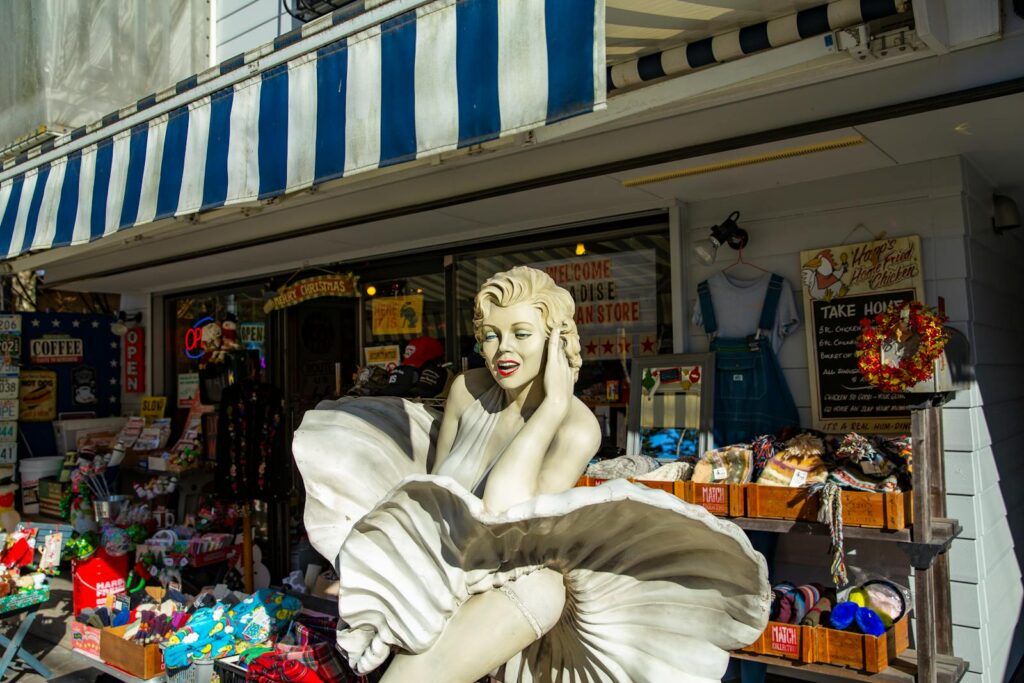
Few garments in cinematic history command the instant recognition and cultural reverence of Marilyn Monroe’s white dress from Billy Wilder’s 1955 film, “The Seven Year Itch.” It is not merely a costume, but a symbol, an icon frozen in time, eternally linked to one of the 20th century’s most captivating figures. The image of Monroe, radiant and playful, standing above a subway grate as an upward breeze sends her pleated skirt billowing, has transcended the silver screen to become a global shorthand for glamour, spontaneity, and a certain mischievous sensuality. This iconic white frock, with its scintillatingly cinched waist, halter neckline, and midi pleated skirt, is synonymous with Monroe’s iconoclastic image and remains one of the most memorable scenes from 1950s motion pictures.
Yet, behind this singular, unforgettable image lies a rich tapestry of stories: tales of creative genius, chaotic celebrity, marital discord, and an unexpected journey through Hollywood lore. It’s a narrative that delves beyond the surface-level allure, offering a glimpse into the meticulous design, the dramatic on-set moments, and the profound personal consequences that this seemingly simple dress brought forth. This isn’t just about a dress taking flight; it’s about a cultural phenomenon taking root, a moment that shaped legacies and etched itself into the collective memory of generations.
We embark on a journey to uncover the multifaceted history of this legendary garment, from the hands of its gifted designer to the tumultuous events surrounding its most famous appearance. We will explore its intricate construction, the groundbreaking film that brought it to life, the spectacle of its initial public unveiling, and the deeply personal strife it ignited in Marilyn Monroe’s life, demonstrating how a piece of fabric became an indelible part of cinematic and cultural history, a story far richer than the mere few seconds it occupied on screen.
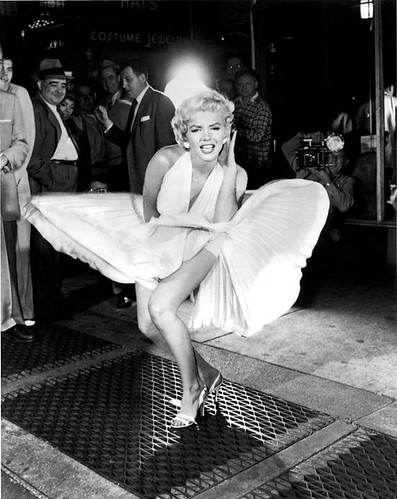
1. **The Genesis of an Icon: William Travilla’s Vision**The story of Marilyn Monroe’s iconic white dress truly begins with its creator, William Travilla. Known simply as Travilla, this accomplished American costume designer had a profound and enduring professional relationship with Monroe, one that blossomed over eight films. His talent was undeniable, underscored by an Academy Award for Best Costume Design he won in 1948 for his work in “The Adventures of Don Juan,” establishing him as a prominent figure in Hollywood’s costume design landscape.
Travilla began working with Monroe in 1952 at 20th Century Fox for the film “Don’t Bother to Knock,” and their collaboration quickly became a cornerstone of her cinematic image. Monroe herself clearly adored his talent and his distinctive aesthetic, known for its clingy, figure-hugging designs that perfectly accentuated her famous silhouette. She once penned a heartfelt note to him, expressing her admiration with the words, “Billy Dear, please dress me forever. I love you,” a testament to the deep trust and rapport they shared.
It was in 1954, while his wife Dona Drake was on vacation, that Travilla sketched the design for the dress that would soon make history for “The Seven Year Itch.” Though the context mentions an unsubstantiated rumor in the book “Hollywood Costume: Glamour! Glitter! Romance!” by Dale McConathy and Diana Vreeland that he “bought it off the rack,” Travilla vehemently denied this, asserting his creative ownership. Despite its eventual legendary status, Travilla famously referred to his creation with a surprising dismissiveness, calling it “that silly little dress,” a phrase that now echoes with an ironic understatement given its profound impact.
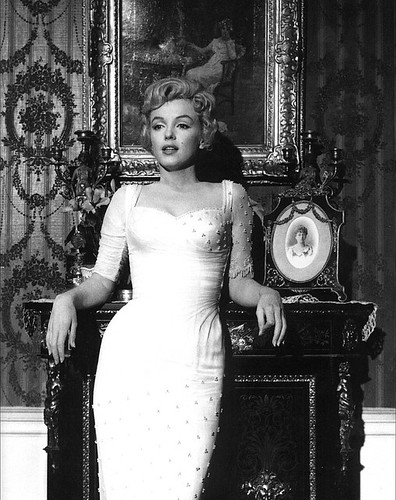
2. **The Dress Itself: A Masterpiece of Design and Craftsmanship**The physical embodiment of the legend, Marilyn Monroe’s white dress, is meticulously described as a “light-colored ivory cocktail dress in a style that was in vogue in the 1950s and 1960s.” It was a design that, while contemporary for its era, possessed a timeless elegance. The material chosen was significant: two pieces of “softly pleated cellulose acetate (then considered a type of rayon) fabric,” selected for its unique properties that allowed it to swing gracefully as Monroe walked, yet crucially, be light enough to catch the all-important breeze that would define its cinematic moment.
The halter-like bodice was a key feature, designed with a plunging neckline that exuded a sophisticated allure. These two pleated pieces came together elegantly behind the neck, strategically leaving the wearer’s arms, shoulders, and back bare, contributing to the dress’s overall sense of uninhibited glamour. This careful construction allowed for a silhouette that was both daring and gracefully revealing, perfectly encapsulating Monroe’s on-screen persona.
The halter was thoughtfully attached to a band positioned immediately under the breasts, from which the dress flowed closely, contouring to the natural waistline. A “soft and narrow self belt was wrapped around the torso, criss-crossing in front and then tied into a small neat bow at the waist, at the front on the left side.” This delicate detailing accentuated Monroe’s figure before descending into a “softly pleated skirt that reaches to mid-calf or below the calf length,” completing the sophisticated cocktail dress silhouette. The practicalities of its design included a zipper at the back of the bodice and tiny buttons at the back of the halter, finishing touches that ensured a polished appearance for what Travilla affectionately described as “cool and clean, in a dirty, dirty city.”

3. **“The Seven Year Itch”: The Film and Monroe’s Pivotal Role**“The Seven Year Itch,” Billy Wilder’s 1955 film adaptation of George Axelrod’s 1952 three-act play, provided the perfect cinematic canvas for Monroe’s burgeoning star power and, of course, for the dress that would become an icon. The film’s plot centers around Richard Sherman, played by noted stage actor Tom Ewell, a middle-aged husband left to his own devices in New York City during a sweltering summer while his wife and son vacation in Maine. His quiet existence is dramatically upended by the arrival of his beautiful, enchanting, and somewhat guileless next-door neighbor, played by Monroe.
Monroe’s character, notably credited simply as “the Girl” in the film, perfectly embodied the “blonde bombshell” persona she had cultivated, yet infused with an endearing innocence. She’s portrayed as a charming, almost ethereal presence who keeps her underwear in the fridge and dunks potato chips in her Champagne, a delightful blend of worldly allure and playful naivety. This portrayal showcased Monroe’s unique ability to blend glamour with an approachable, effervescent charm, making her character instantly relatable and utterly captivating to audiences.
The narrative builds toward one pivotal, unforgettable scene. During a sultry summer night, Richard and “the Girl” walk along a city sidewalk after catching a movie. As they pause over a subway grate, “the Girl” feels a cool blast of air from a passing train. With a delightful, flirtatious remark, “Ooh, do you feel the breeze from the subway? Isn’t it delicious!” she steps onto the grate, setting the stage for the dress to take flight and indelibly etch itself into the annals of cinematic history, a moment that would become far more famous than the film itself.

4. **The Midnight Spectacle: Filming on Lexington Avenue**The initial attempt to capture the iconic subway grate scene unfolded in the early hours of September 15, 1954, on Lexington Avenue at 1:00 am, outside the Trans-Lux 52nd Street Theatre in New York City. What was intended as a late-night shoot quickly escalated into an unplanned, yet deliberately orchestrated, media sensation. Director Billy Wilder, ever the shrewd showman, saw an opportunity, inviting fans and paparazzi to the set, effectively turning the filming into a pre-release publicity coup.
This decision transformed the quiet street into a bustling spectacle. Hundreds of fans, swelling to between 2,000 and 5,000 spectators, gathered behind police barricades, jostling with about a hundred photographers, all eager to catch a glimpse of the luminous star. Monroe’s publicist, Roy Craft, vividly recalled the overwhelming public interest, quipping that “The Russians could have invaded Manhattan and nobody would have taken any notice,” illustrating the sheer magnitude of attention Monroe commanded.
The atmosphere was electric but chaotic. The crowd, largely male, reacted loudly with shouts of “higher” each time a blast of wind from a crew-operated machine beneath the grate lifted Monroe’s skirt. Despite the spectacle, the constant camera flashes and incessant noise created by the thousands of onlookers made it exceedingly difficult for the crew to capture the scene properly. Monroe, ever the professional, came prepared for the gawkers, notably wearing “two pairs of white underwear” to ensure that despite the dress’s dramatic ascent, she maintained a measure of modesty amidst the public frenzy.
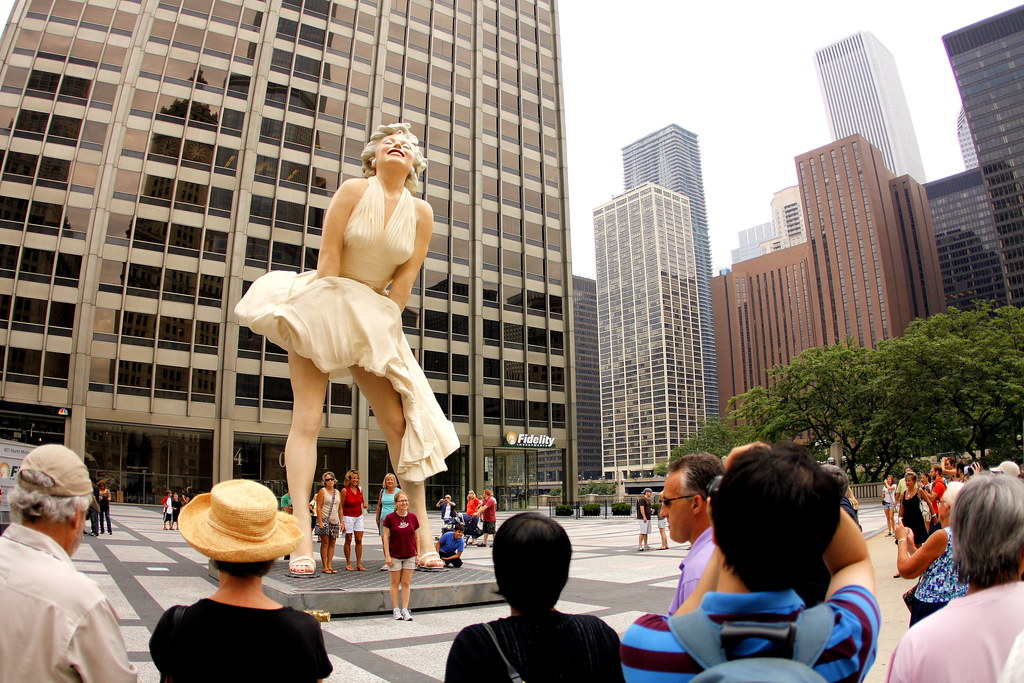
5. **Joe DiMaggio’s Fury: The Scene’s Personal Fallout**The very public spectacle of Marilyn Monroe filming the subway grate scene had profoundly personal and immediate repercussions for her tumultuous marriage to baseball legend Joe DiMaggio. DiMaggio, the celebrated New York Yankees center fielder and dubbed the greatest all-around baseball player of his era, was present on the set that night. However, his presence was not one of supportive admiration, but rather of growing disapproval and simmering rage, a stark contrast to the delighted cheers of the crowd.
Witnessing his wife in such an exposed and celebrated manner, which he reportedly considered an “exhibitionist” display, left him visibly enraged. Photographer George S. Zimbel recollected the palpable tension on set, describing how everything went “deathly quiet” as Monroe’s disapproving husband “stormed across the set and very publicly left the scene.” His fury was undeniable, a stark premonition of the dramatic events that would follow that fateful night, casting a dark shadow over an otherwise glamorous event.
The argument escalated dramatically after filming ceased, first erupting in the theater lobby and later continuing into Suite 1105 at the St. Regis Hotel, where Monroe and DiMaggio were staying. Their union, which had begun just nine months prior in January 1954, was already fraught with tension, largely due to DiMaggio’s intense jealousy, controlling attitude, and allegations of physical abuse. This incident proved to be the final, irreparable crack in their already fragile marriage, acting as the ultimate catalyst for its demise.
Upon returning to Los Angeles just three weeks later in October 1954, Monroe took decisive action, filing for divorce from DiMaggio on grounds of “mental cruelty.” The swift and dramatic end to their high-profile marriage made headlines, with New York’s Daily News prominently featuring the front-page headline: “Marilyn Splits With Joe Over Sexy Pictures.” This infamous scene, therefore, was not just a cinematic triumph but also a pivotal, tragic moment in Marilyn Monroe’s personal life, directly contributing to the end of one of Hollywood’s most talked-about relationships.

6. **From Street to Soundstage: The Crucial Reshoot**Despite the immense public interest and the circus-like atmosphere generated during the midnight shoot on Lexington Avenue, the initial attempts to film the iconic subway grate scene proved largely unsuccessful for cinematic purposes. The chaos of the crowd, the constant camera flashes, and the incessant noise, while creating a memorable real-world event, made it impossible for the film crew to capture the clean, usable footage required for the movie. The raw energy of the street translated poorly into the controlled environment needed for a polished film sequence.
Recognizing these insurmountable technical challenges, director Billy Wilder made the strategic decision to reshoot the entire sequence. This crucial re-enactment of the famed wind-blown dress moment was meticulously staged not on the bustling streets of New York, but within the controlled confines of a soundstage at 20th Century Fox in California. This controlled environment allowed Wilder and his team to perfect the lighting, sound, and the all-important wind machine, ensuring that Monroe’s performance and the dress’s dramatic flight were captured flawlessly.
It is, in fact, this studio reshoot that produced the now-iconic cinematic moment that has graced countless screens and memories around the world. While the original street filming provided invaluable publicity and created an enduring real-life legend, it was the precision and artistry of the soundstage production that truly cemented the image of Marilyn Monroe and her white dress into cinematic immortality. The vibrant, chaotic shots from the street, however, were not entirely discarded; they found their purpose in the film’s “advertisements and promotions,” forever bridging the gap between a staged Hollywood moment and its sensational real-world genesis.
While the world was captivated by Marilyn Monroe’s radiant performance and that legendary skirt-blowing moment, the fate of the dress itself, after its star turn, embarked on a journey almost as storied as its initial public unveiling. Once the cameras stopped rolling and the film was safely in the can, this now-iconic garment began a quieter existence, one shrouded in a bit of mystery and kept under the watchful eye of its original creator, William Travilla, for many years.
Travilla, the masterful designer who conceived the dress, harbored it within his private collection following Monroe’s untimely passing in 1962. It wasn’t an isolated keepsake; rather, it was part of a larger, cherished ensemble of costumes he had meticulously crafted for the star throughout their eight-film collaboration. For decades, the sheer secrecy surrounding this collection led to persistent rumors that it had been irrevocably lost to history, an almost mythic disappearance of Hollywood treasure.
It was only after Travilla’s own death in 1990 that this particular veil of secrecy began to lift. His colleague, Bill Sarris, took on the responsibility of showcasing these priceless garments, finally bringing them out of the shadows and back into the public consciousness. The revelation confirmed that ‘that silly little dress,’ as Travilla famously and ironically called it, had indeed survived, safely preserved as a tangible link to one of cinema’s most enduring figures.

8. **Debbie Reynolds’ Vision: A Museum for Hollywood’s Treasures**The white dress’s next chapter saw it fall into the hands of another beloved Hollywood icon, actress Debbie Reynolds. A passionate and discerning collector of cinematic memorabilia, Reynolds harbored a grand vision: to establish a museum dedicated to preserving and celebrating the rich history of filmmaking, filled with the very artifacts that shaped the silver screen. She acquired the dress in 1971 for a reported sum of $200, a seemingly modest price today for an item of such immense cultural value.
Reynolds’ collection was not merely extensive; it was breathtaking in its scope and significance. Beyond Monroe’s iconic white dress, her treasure trove included such legendary pieces as Elizabeth Taylor’s ‘Cleopatra’ headdress and Charlie Chaplin’s famous ‘Little Tramp’ hat. Each item represented a piece of film history, painstakingly gathered by Reynolds with the dream of sharing these tangible links to cinema with the world.
For decades, Reynolds poured her heart and soul into this ambitious project, envisioning a permanent home where these cinematic relics could inspire generations. However, despite her unwavering dedication and considerable effort, the grand plan for the Hollywood Motion Picture Museum, where these items were destined to reside, unfortunately, never materialized. This left the priceless collection, including Monroe’s dress, in a state of limbo, awaiting its next, unforeseen destination.
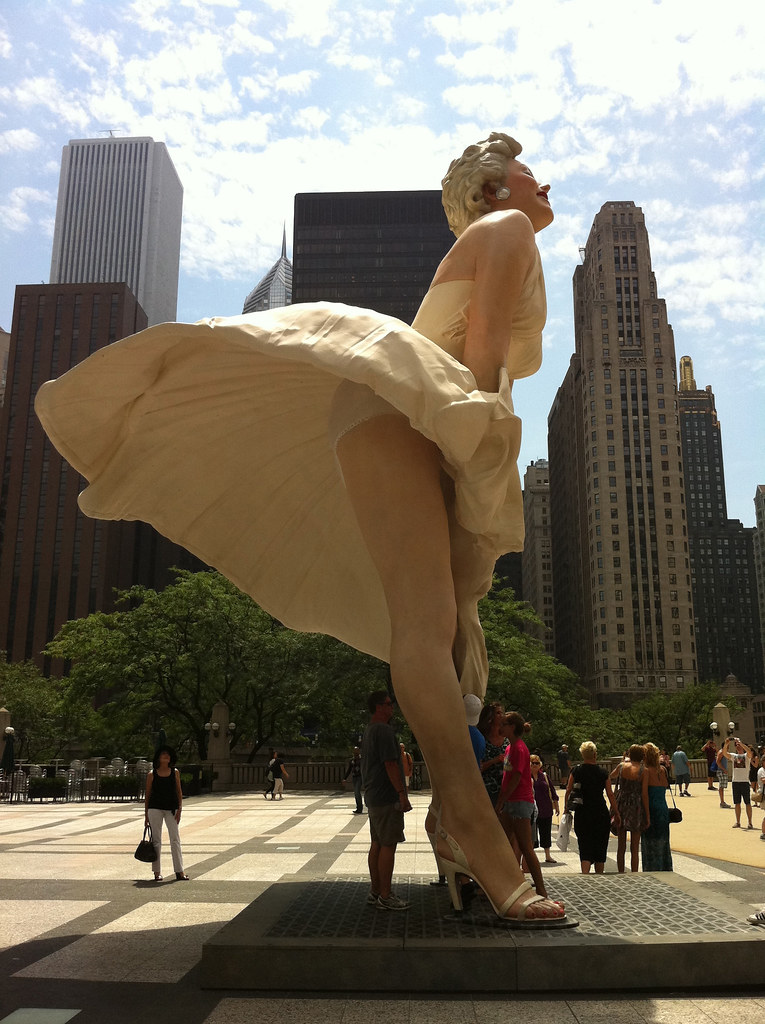
9. **The Record-Breaking Auction: A Financial Phenomenon**The unrealized dream of Debbie Reynolds’ museum eventually led to a momentous, and financially stunning, event in 2011. Facing economic challenges, Reynolds made the difficult decision to auction off her entire, vast collection of Hollywood memorabilia, including the now-legendary white dress. The announcement sent ripples of excitement through the collecting world, setting the stage for what would become a historic sale.
Anticipation ran high, with Profiles in History, the auction house overseeing the sale, initially estimating the dress would fetch a substantial sum—somewhere between $1 million and $2 million. These figures alone underscored the dress’s recognized historical and cultural significance, positioning it as a highly coveted item for discerning collectors worldwide.
However, the actual outcome transcended all expectations. When the hammer finally fell on June 18, 2011, after a fierce bidding war conducted over the phone to an undisclosed buyer, the dress sold for an astonishing $4.6 million. With an additional $1 million commission, the total price reached an incredible $5.6 million, cementing its status as one of the most valuable dresses ever sold. This record-breaking transaction not only highlighted the enduring allure of Marilyn Monroe but also the profound monetary value attached to tangible pieces of cinematic legend.
10. **Enduring Cultural Impact: From Cinema to Art**Even decades after its cinematic debut, the image of Marilyn Monroe in her wind-blown white dress remains an indelible fixture in global culture, transcending its origins to become a universal shorthand for the star herself. This singular moment has proven to be a perpetual source of inspiration, spurring countless imitations and tributes across various artistic mediums and popular culture.
In the realm of cinema, the dress’s iconic status has been lovingly, and sometimes humorously, replicated numerous times. Audiences have seen Fiona’s animated homage in ‘Shrek 2’ (2004), Amy Poehler’s comedic turn in ‘Blades of Glory’ (2007), and Anna Faris’s portrayal in ‘The House Bunny’ (2008), each underscoring the image’s pervasive recognition. More recently, Ana de Armas donned a recreation in the biographical fiction ‘Blonde’ (2022), demonstrating its continued relevance in depicting Monroe’s storied life. Even films like ‘The Woman in Red’ (1984) drew direct inspiration, featuring a similar scene, albeit with a vibrant red dress.
Beyond the screen, the image has found a powerful resonance in art and public installations. Seward Johnson’s gigantic, 26-foot-tall sculpture, ‘Forever Marilyn,’ dramatically captures the pose, inviting tourists to stand beneath her skirt, experiencing a scaled-up version of the famous moment. This artistic interpretation, which has travelled and been permanently installed in places like Palm Springs, alongside an image even grown in a Japanese rice field, exemplifies how deeply the dress has etched itself into the global artistic and cultural consciousness, becoming a modern myth.
Read more about: The Unforgettable Legacy of Tim Conway: A Deep Dive into the Brilliant Mind of a Comedy Icon

11. **Fashion’s Perpetual Muse: Tributes and Inspirations**The allure of Marilyn Monroe’s white dress extends deeply into the world of fashion, where it continues to serve as a perpetual muse for designers, celebrities, and even major brands. Its unique blend of sophistication, sensuality, and carefree spirit has inspired countless homages, solidifying its place as an enduring style icon.
One notable example of its fashion influence can be seen in Angelina Jolie’s white Marc Bouwer dress worn to the 76th Academy Awards. Often cited as one of the best Oscars dresses of all time, it was explicitly inspired by Monroe’s iconic design, showcasing how a timeless silhouette can be reinterpreted for modern glamour. Beyond the red carpet, the dress has been mimicked by pop culture figures like Britney Spears and Nicki Minaj in their performances, and recreated in high-profile photoshoots featuring stars such as Lindsay Lohan and Madonna. Even the quintessential blonde bombshell, Barbie, has had her own version of the famous frock.
The dress’s impact is so significant that it has permeated commercial fashion as well. Brands like JCPenney Co. Inc. have collaborated with Authentic Brands Group to launch capsule collections, such as ‘Marilyn Monroe by JCPenney,’ highlighting Monroe’s ‘effortless style and fashion legacy with feminine silhouettes and polished looks.’ This continuous recreation and reinvention across various platforms underscore the dress’s unparalleled ability to remain relevant and captivating, constantly influencing contemporary fashion trends and tributes.
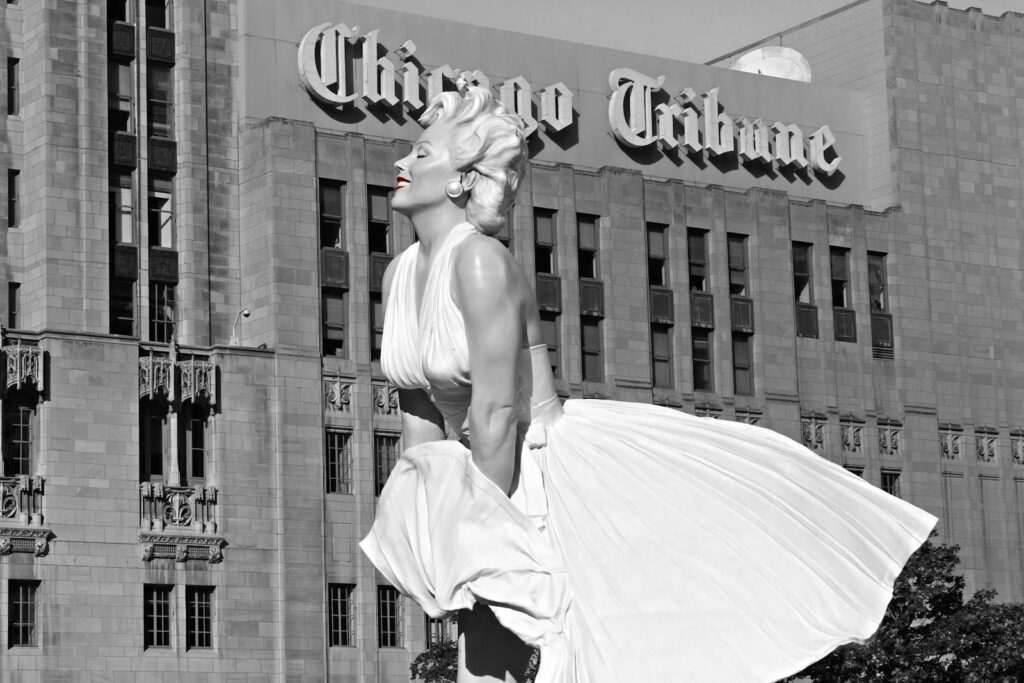
12. **More Than a Dress: A Symbol of Contradiction**Ultimately, Marilyn Monroe’s white dress from ‘The Seven Year Itch’ is far more than just a piece of fabric; it is a profound cultural artifact, a symbol encapsulating the very essence of its wearer’s enigmatic allure. Its legacy, as ‘one of the most famous dresses in history,’ isn’t solely derived from its revealing attributes, but from its masterful embodiment of the “alchemical mix of innocence and seduction” that Monroe so effortlessly projected onto the silver screen.
Travilla himself, despite his dismissive ‘that silly little dress’ remark, inadvertently created a garment that perfectly reflected Monroe’s beguiling contradictions. It was at once angelically white and daringly audacious, a sartorial representation of her unique ability to blend girlish charm with an undeniable, yet graceful, sensuality. This duality, this push and pull between vulnerability and power, resonated deeply with audiences and continues to fascinate generations.
The dress, therefore, stands as a testament to Monroe’s enduring iconic status, a visual shorthand for her influence on Hollywood, fashion, and the broader cultural landscape. It captures a moment of carefree effervescence, reflecting the booming American exuberance of the 1950s, while simultaneously hinting at the complex, deeply human stories that lay beneath the surface of one of the 20th century’s most captivating and beloved figures. It remains an unforgettable emblem, forever woven into the tapestry of cinematic legend, proving that sometimes, the simplest garment can tell the most profound story.

